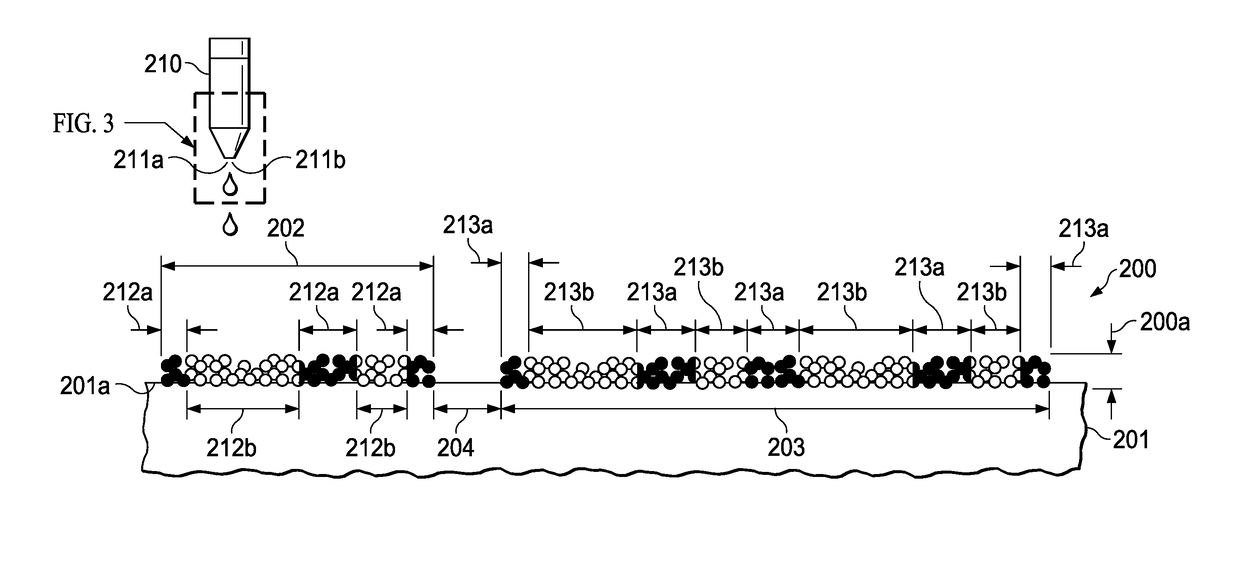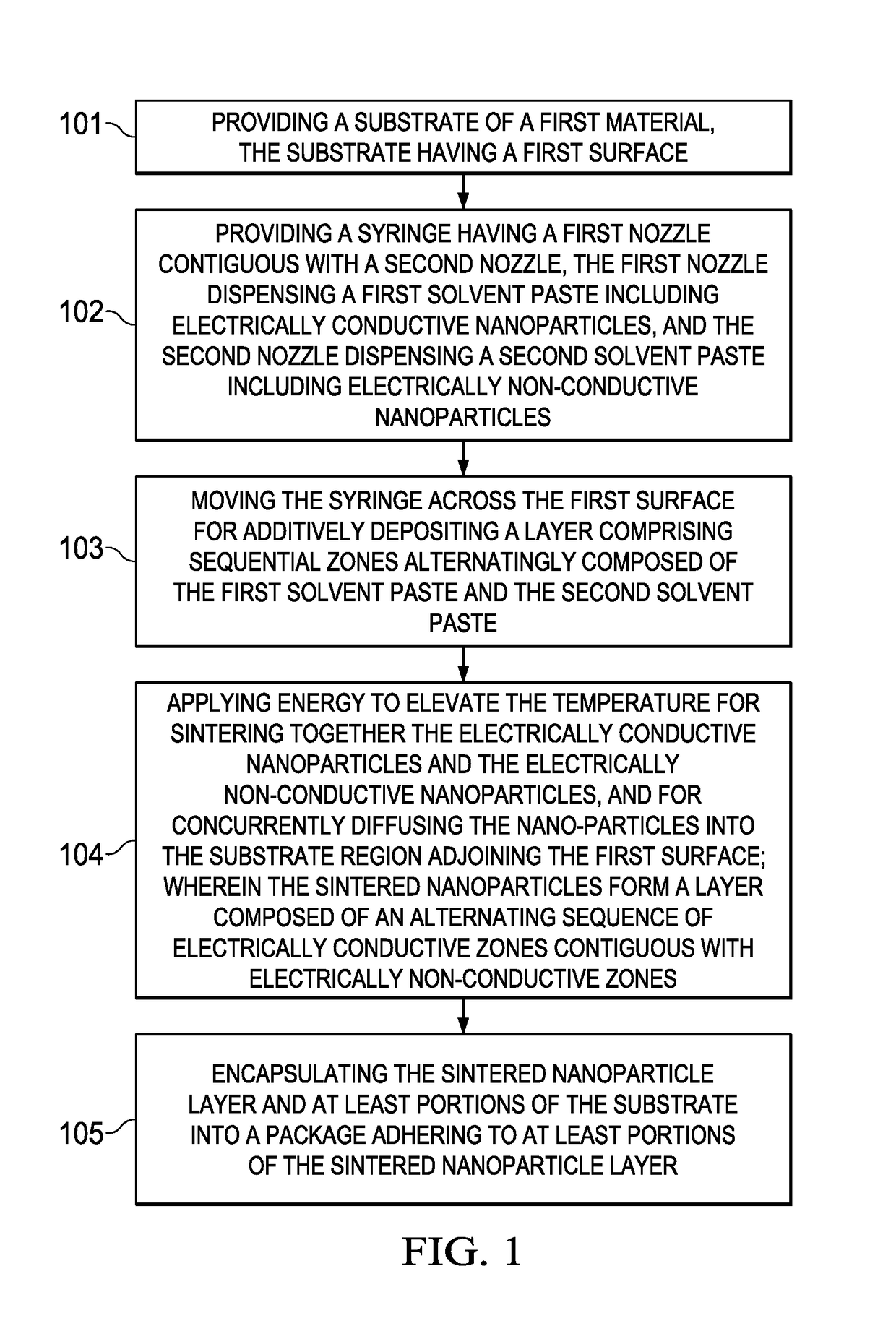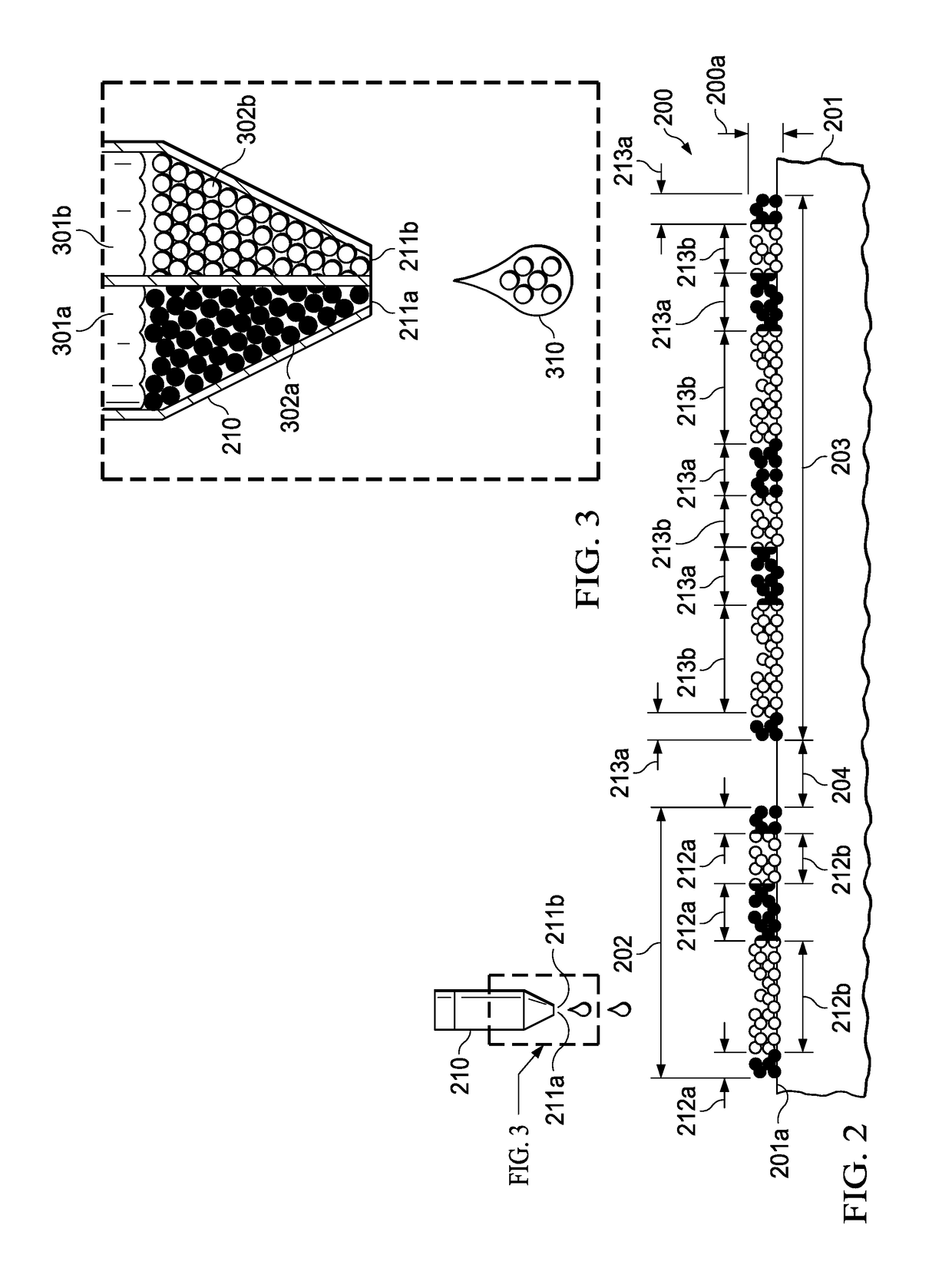Packaged semiconductor device having patterned conductance dual-material nanoparticle adhesion layer
- Summary
- Abstract
- Description
- Claims
- Application Information
AI Technical Summary
Benefits of technology
Problems solved by technology
Method used
Image
Examples
Embodiment Construction
[0014]In an embodiment of the invention, a method for enhancing the adhesion and mechanical bonding between objects made of diverse materials such as metals and polymerics is described. The method comprises the formation and anchoring of an additive adhesion film composed of intermeshed nanoparticle layers between the objects. FIG. 1 is a diagram summarizing an embodiment of the invention. An object, onto which the additive film is constructed, is herein referred to as substrate, while another object, which needs adhesion to the substrate, is herein referred to as package. As examples, a substrate is denoted 201 in FIG. 2, and a package is denoted 501 in FIG. 5.
[0015]An application of the process flow shown in FIG. 1 can be applied to the fabrication technology of semiconductor devices. In semiconductor technology, the substrate typically is either a metallic leadframe or a laminated substrate composed of a plurality of alternating electrically insulating and electrically conductive...
PUM
 Login to view more
Login to view more Abstract
Description
Claims
Application Information
 Login to view more
Login to view more - R&D Engineer
- R&D Manager
- IP Professional
- Industry Leading Data Capabilities
- Powerful AI technology
- Patent DNA Extraction
Browse by: Latest US Patents, China's latest patents, Technical Efficacy Thesaurus, Application Domain, Technology Topic.
© 2024 PatSnap. All rights reserved.Legal|Privacy policy|Modern Slavery Act Transparency Statement|Sitemap



